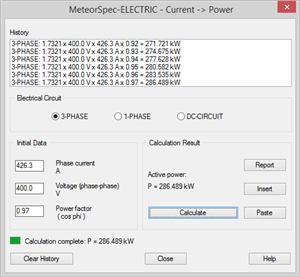
Michael Brennan:
Okay thank you, that's a very fair point and makes sense. I feel like the total load is larger than required by gut feeling but perhaps it is about right.
I have 7 sub DB's feeding from one main DB. I have taken diversity into account separately on each DB but not between the DB's. I was not sure if I should take that into account additionally or not. I have assumed the following rules for diversity:
- Socket circuits: 100% largest circuit, 50% remaining circuits.
- Lighting (LED): 90% of all lighting circuits.
- Heating: 100% heating control panel circuit
- Ventilation: 100% first circuit, 75% remaining circuits
- Chillers: 100% first chiller, 75% second chiller
- Cookers: 100% largest circuit, 80% second-largest circuit, 60% remaining circuits
- Dishwasher: 75% circuit
- Walk-in Refrigerators: 100% largest, 75% second largest
I have assumed these rules for each individual DB. Each DB serves different areas, so I'm not sure if I can apply diversity between the DB's additionally to the diversity already applied separately?
Probably OK but we need to know more about the loads to ascertain if this is reasonable.
Socket outlets, probably fine.
Lighting., 90% of the installed load might not be enough, it is reasonable to assume that it will all be in use in working hours. I would allow 110% of the installed load to take account of manufacturing tolerances and mains voltage variations. if 90% of the circuit ratings has been allowed, then that is probably generous.
Heating controls, probably fine.
Ventilation, it depends on how controlled, it might all run in working hours, in which case 110% of the connected load.
Chillers, might all run in hot weather, unless duty/standby.
Cookers probably fine, unless unusually intensive use is expected.
Dishwasher, probably fine.
Walk in fridges, probably fine.
In general it is the installed load that should be counted, not the size of the sub circuits.
As a simplified example, consider 200 LED lights each with an input current of 0.25 A, connected to ten sub circuits, each 16 amps. I would take the maximum demand as being 200 multiplied by 0.25 to give a load of 50 amps, plus say 10% for mains voltage variations and manufacturing tolerances. 55 amps.
I would not take it as being 160 amps, the sum of the sub circuit ratings, nor as 144 amps, 90% of the the total sub circuit ratings.
Likewise a 66 amp chiller I would count as being 66 amps, plus again a 10% margin for voltage variations and manufacturing tolerances. The chiller might well be on a 100 amp circuit, but I would not count it as 100 amps when assessing total load.
Socket outlets are the big unknown as we dont really know what will be plugged into them. A fixed allowance per square meter of floor area can be a better approach for large areas. in shops and offices.
This however sounds like a catering operation, in which case one should be very generous WRT to socket outlets and the assumed loading thereof. IT only takes a few tabletop fryers each with two 3 Kw elements for it all to go orribly wrong.


We're about to take you to the IET registration website. Don't worry though, you'll be sent straight back to the community after completing the registration.
Continue to the IET registration site